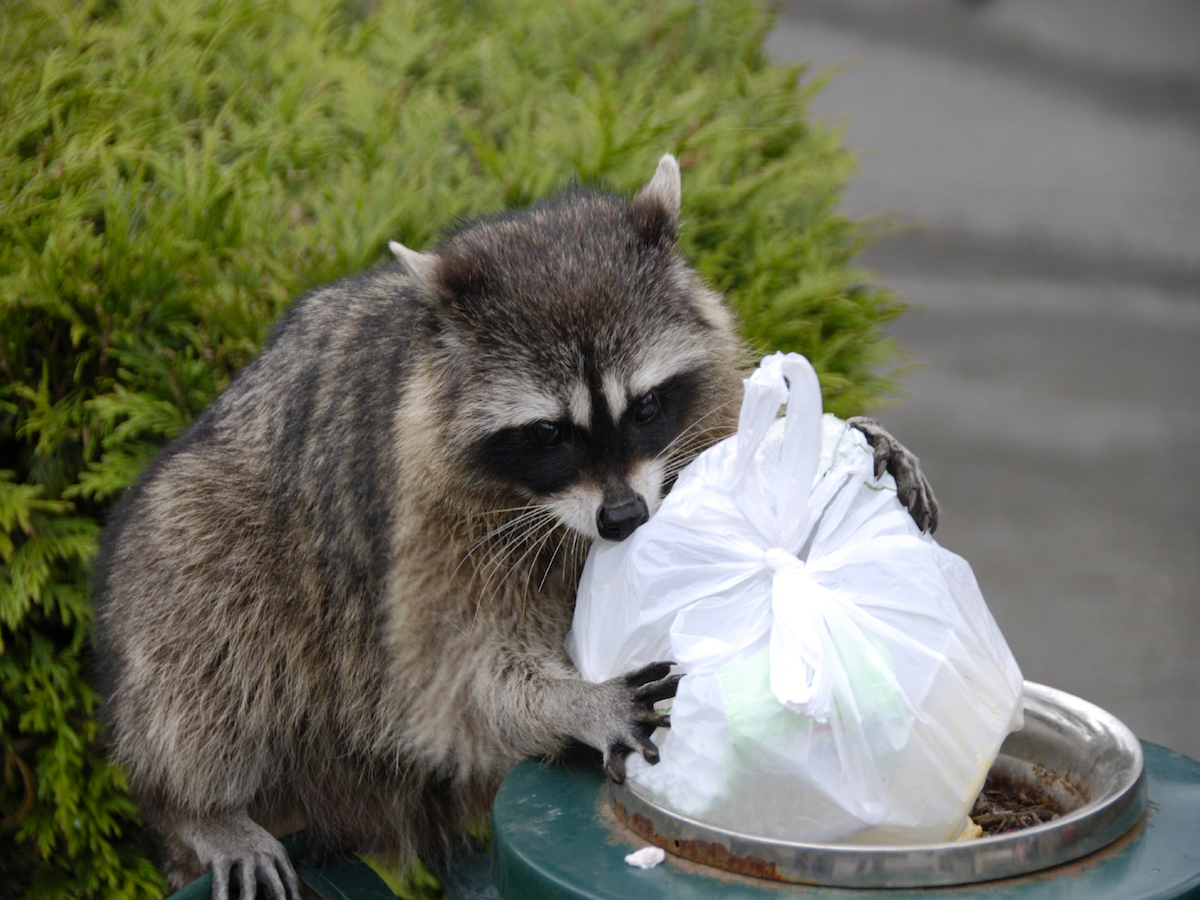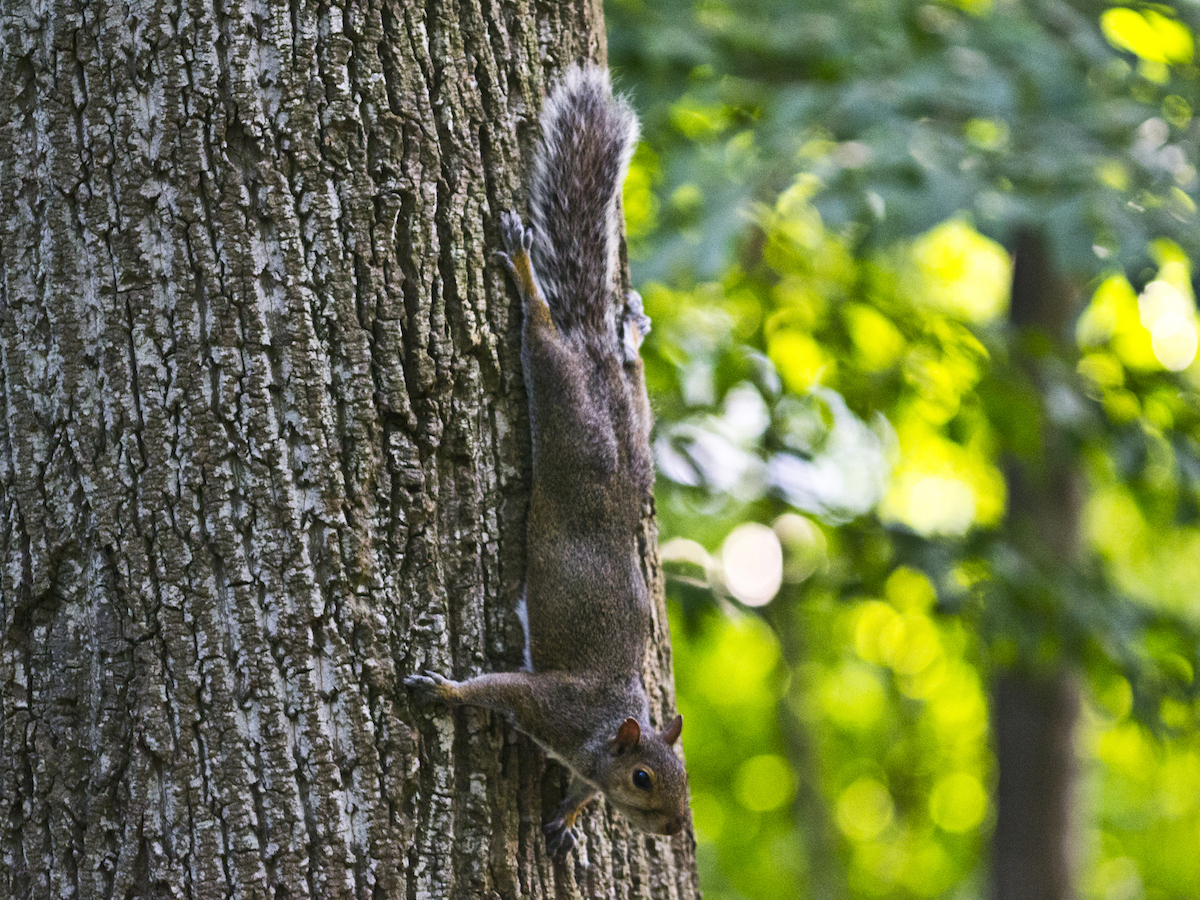Raccoons Procyon lotor

Raccoon Identification
Color: Salt-and-pepper gray and black with a prominent black “mask” over the eyes
Size: About 2 – 3 feet in length
Legs: 4
Antennae: No
Shape: Stocky with a heavily furred, ringed tail
Region: Found throughout the U.S.
What are Raccoons?
Raccoons are mammals that are rarely seen during the day because of their nocturnal habits. Raccoons are found throughout the United States but are more common in the wooded eastern portions of the country than in the more arid western plains. Continue reading if you want additional raccoon facts.
What Do Raccoons Look Like?
Raccoons are mid-sized animals that are about 2-3 feet long. Their bodies are stocky, round and covered in salt-and-pepper colored fur. Raccoons are known best for the “black mask” of fur around their eyes, also known as a “bandit mask,” and black rings around their furry tails.
While not all raccoons have rabies, raccoons in general are major hosts of rabies in the U.S., especially in the eastern part of the country where their populations are increasing. Just because a raccoon is active during the daytime, that doesn’t necessarily mean it’s carrying rabies. However, there are some indicators that a raccoon could be infected with the rabies virus. Key symptoms of a rabid raccoon include confusion and disorientation, leg paralysis or difficulty walking, wet and tangled hair, significant aggression, and production of very loud, unusual noises. Rabid raccoons may also foam at the mouth and have watery eyes.
Raccoons are omnivores, meaning they will eat both plants and other animals. This includes fruits, berries, nuts, fish, frogs, mussels, crayfish, insects, turtles, mice, rabbits, muskrats and bird eggs. Raccoons usually have one litter per year, which is usually born in late spring or early summer. One litter may contain between three and five young. Raccoons can live as long as 12 years in the wild. They do not hibernate but do become inactive during severe winter weather.
Raccoons prefer to live in forested areas near a water source. Although commonly found in association with water and trees, raccoons can also be found around farmsteads and livestock watering areas. Raccoons typically like to den in hollow trees, ground burrows, brush piles, muskrat houses, barns and abandoned buildings, dense clumps of cattail, haystacks or rock crevices. They are also known to use parts of homes, including chimneys, attics, and hollow areas beneath porches to make dens.
In addition to rabies, there are other harmful diseases that raccoons can carry and potentially transmit to humans, including raccoon roundworm, which is an intestinal parasite. This is transmitted through unintentionally ingesting a microscopic roundworm egg.
Raccoons also pose a serious property threat. They can damage homes and outbuildings, especially when they try to enter through attics or chimneys that they target as denning sites. In some cases, raccoons have even torn off shingles or boards to gain access to an attic or wall space.
The key signs of a raccoon infestation are both visual and audible. Damage to a home’s insulation, wood, shingles, electrical wiring, walls or other parts of the structure is a telltale sign that a raccoon has taken up residence inside. Another indication of a raccoon infestation is the presence of droppings, urine stains, or built-up materials from creating a nest.
Additionally, raccoons often raid, and can make a mess of, contents in garbage cans while they are in search of food. If a homeowner notices trash dispersed on the property, raccoons could be to blame. Raccoon paw prints may also be visible in the yard.
Raccoons sometimes kill poultry, destroy bird nests, and damage gardens or crops, so any signs of these types of activities can also mean there is a raccoon infestation. Hearing loud thuds and noises from raccoon movement can also signify a homeowner has raccoons in the home.
There are various precautions that homeowners can take to try to avoid a raccoon infestation from taking root. First, raccoons can find access into homes through broken vents, holes, uncapped chimneys and other openings along the roof, which is why homeowners should regularly inspect, repair and seal any of these or other potential points of entry. Loose siding and shingles should also be repaired, and it’s also helpful to install a mesh cover or cap over chimneys and other exposed openings to prevent entry.
Homeowners should store trash in sealed areas, ideally as a locked shed or outhouse. Raccoons are very adept at learning how to open garbage cans, so if trash cans are kept out in the open, it’s best to use tightly fitting, animal-proof lids to avoid unwanted attention from hungry raccoons on the prowl for food. Birdseed, bird feeders and fountains should also be removed, as they are sources of sustenance to raccoons and other wildlife. Likewise, built up debris, brush and leaves can serve as perfect hiding spots and dwellings for raccoons, so it’s important to regularly rid the yard of these piles. Also, consider storing firewood, which raccoons may use to help build a shelter, at least 20 feet from the house during the cooler months.
If an infestation is suspected and you need additional information regarding how to get rid of raccoons, contact a licensed pest professional to inspect the property and formulate a plan to get rids of raccoons. Homeowners should not attempt to address an infestation themselves, especially since these wild animals may be carrying rabies, raccoon roundworm or another disease.
If you suspect an Argentine ant infestation in your home, the best course of action is to contact a licensed pest control professional. They will conduct a thorough inspection to identify the full extent of the problem. Once the situation is properly identified, the appropriate control measures can be taken.
You can find a pest professional near you with the helpful zip code search below.




